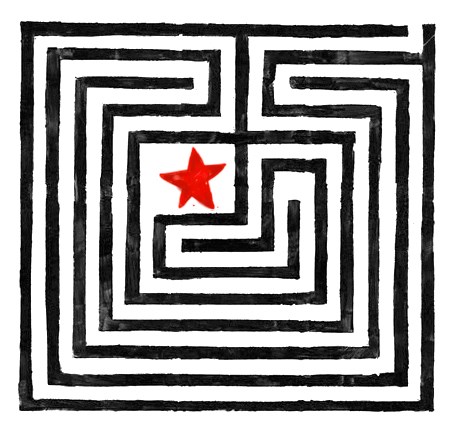Ben Darwin, an ex-elite sportsman, coach and co-founder of GAIN LINE Analytics, analyses what are the most important factors that determine effective team performance.
At GAIN LINE Analytics, we have spent five years looking at how teams are governed and how that affects performance over time. We call this ‘Cohesion Analytics’. We have found understanding between participants to be a highly undervalued resource when it comes to teams. This understanding takes three forms:
- Understanding between People
- Understanding of the System
- Understanding of Roles
Many decisions that affect understanding are made by those positions of governance. So, if we talk about ‘Understanding between People’, this kind of understanding can only be built over time, and through consistency. If you are constantly chopping and changing players, there will never be a chance for any understanding to develop between them. Across all of the sports we have studied, the greatest attribute related to cohesion is defense. This is closely followed by loyalty. Generally, players tend to stay at their first club the longest. When a player starts to jump from club to club, they are less inclined to stay for any great period of time, or they’ll demand more compensation to stay as part of the organization, particularly as it becomes more successful.
One of the biggest destroyers of Cohesion is Action-Bias. When things are going wrong, teams or their Boards decide to make changes, especially when changes are not necessarily required. Looking at Richmond, during a period just prior to their 2017 AFL Premiership Title, there was a group of people so unhappy with their beloved clubs’ performance; they attempted to overthrow the Richmond Board. Much of the unhappiness from this group stemmed from what they perceived to be a lack of action on behalf of the club’s Board. However, it was this so-called lack of action, which in reality was a great demonstration of patience that eventually led to the success of the team. And not so coincidentally, it was Richmond’s previous impatience, which created several difficulties for the team and its performance, spanning right back to the 1980s.
There is a saying at Sydney Swans, “Don’t Panic, its Organic”—if the team holds true to itself, then success will come. Two teams that do struggle with this are the Parramatta Eels and the Carlton Football Club. Both giants of the game, both have had large amounts of success they are attempting to recapture. But it’s these kinds of attempts along with the speed at which the clubs think it should happen and want it to happen, that often breed the difficulties barring the sought after success. Understanding between people cannot be falsified. It cannot be created out of nothing; it has to come through time and patience. If we look at the Top 25 teams, almost every single one has had great patience at some point during the past 25 years.
Basically, there are two things that can bring success: Money and Cohesion (or understanding). Money will buy you skill but in order to keep it, you will have to spend more. However, Cohesion is a far more hopeful asset because it allows for the improvement of people over time and allows for the achievement of sustainable success. There is something called the Bayern Munich Mirage or as it often described to us as, the Melbourne Storm Mirage—if you take a player out of a very well put together cohesive team such as the two aforementioned clubs, this player will under perform at their new club. Their individual skill and talent appears to be far greater in the context of the cohesive team, than it is anywhere else. Talent is not always transferable.
The Top 25 teams listed have, in the most part, been a part of a Dynasty at some point during the past 25 years. It is not about winning in one year; it is about who has been really consistent. Of these teams, the Crusaders have shown the greatest level of consistency. On that note, Robbie Deans once said the mistake people make when thinking about the Crusaders is that these players are coming from an extraordinary talent pool, when in fact they’re just a bunch of boys, many of whom are coming out of the same school in Christchurch. Deans isn’t talking about geography here, rather he is referring to bringing players through the same system, together, and from a young age.
The Crusaders have also shown an enormous ability to perform under duress. We have never seen a team deal with pressure like the Crusaders playing group of 2011. After the first round, the city of Christchurch suffered an earthquake in which almost every player was personally touched by the tragedy in some way. The following week’s game was cancelled and after that, the team had to play the rest of the Super rugby season away from their home, which also included playing in London, followed by South Africa, New Zealand and then Australia, where they played in the Final only to lose by a five points. No other team we have investigated has ever been able to play an entire tournament away from home and be enormously successful like the Crusaders were in 2011. Over time, the level of the Crusaders’ consistency has never changed, and the way in which the team feeds its local players through the system has not fundamentally changed since 1997.
When skill is added to cohesion, dynasties such as the Melbourne Storm, Sydney Swans and the Crusaders, are formed. Yet skill acquisition is not about getting great coaches. We have found some clubs are simply a black hole for talent—no matter what goes in, nothing comes out. One of the certainties we have learned is that skill does not improve when there is a constant churn, whether it is players, coaches or those involved in the club governance. In turn, this impacts upon the juniors and their ability to develop over time.
Great players do not always start out appearing to be the next great talent. The Brisbane Lions of the late 1990s was a team finding it hard to be competitive. In 1998, the club came last, with only five wins for the season. However, 21 of its players during this time were there for the team’s three premiership wins from 2001 to 2003. The club also made the final in 2004. During the team’s earlier trials, many critics said the players weren’t good enough to play in the AFL. However, after the multiple premierships, some of the team's players are now regarded as some of greatest players of the game.
The Melbourne Storm spine is another classic example. “The Big Three”—Billy Slater, Cooper Cronk and Cameron Smith—were bought for a very small amount of money, and Craig Bellamy has admitted he did not know if they were going to be successful. Slater was a jockey, Cronk a Rugby Union player and Smith was employed at a printing factory. These players, at the time, were not wanted by any organisation. Yet, together, they went on to become a formidable success for the Storm. What we would like to put out there is would Slater, Cronk and Smith have become as successful as they did, had they gone to any of the Sydney clubs? Would these three players have reached such a high level of individual success had they played for other clubs, without each other? Part of the reason behind their success was around the fact that they were together.
The biggest question we ask in Cohesion Analytics is this: does success come from keeping skill stable, or is it the stability of the team that creates the skill? We feel it’s the latter because keeping people allows them the time to develop to their best potential and reach levels of success that no one thought plausible. As it is said in Football (soccer), “If you look after your academy, the academy looks after you.” This is certainly true of my experience with the Brumbies and the Wallabies in the late 1990s. The more we speak to leaders in sport, from Football to Rugby League to Rugby Union to Ice Hockey to Cricket and AFL, the more we hear there is something to our research at Gain Line that rings true for them, yet they had not seen it in the data. What we are trying to do is prove with analytics the notion of a “Champion Team” is it, rather than the idea of a “Team of Champions”.
Australasia’s Best Sporting Team is about recognising the success of a club, rather than that of individual players. These are clubs and teams that have been sensible in avoiding the short-term fixes and instead opting to take a step back in order to foster long-term success. While short-term fixes will often bring a championship, the chances for future and long-term success are usually jeopardized. Often, Boards pull the trigger in firing the Coach or buying players en masse. Successful clubs understand their decisions and their subsequent ramifications. Any decision, be it a good or bad one, will have some sort of knock-on or domino effect with a team. A team is a complex set of relationships and every single person brought into the environment influences the other team members and the way in which the group is put together and therefore, ultimately, how the team will perform.
Essentially, teams of all forms operate in a similar fashion, be it a team of people in stock broking firm, a hospital or a Rugby League club. People get frustrated when they feel they are overlooked or are not listened to, and they leave. People will be loyal to systems that treat them well. Loyalty is not black and white; it is very grey. One of my favorite quotes comes from a young I.T. professional by the name of Labib Rahman. He was involved in a Startup and was unfairly overlooked for a promotion. Rahman decided to leave saying, “If you are not going to show faith in me, I am not going to show faith in you.”
The constant search for talent often results in the people already a part of that team, being overlooked. Great teams may still search for talent, yet they generally foster a great respect for the continuity of the team environment along with having an understanding of the gains and opportunities to be made from development within, given the time.

